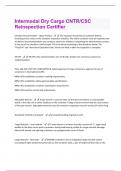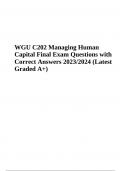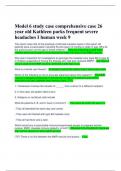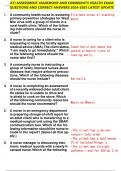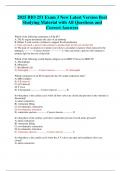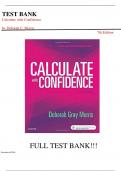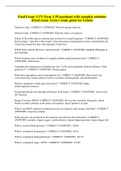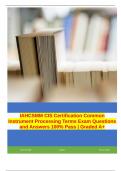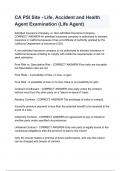Exam (elaborations)
Intermodal Dry Cargo CNTR/CSC Reinspection Certifier Questions and Answers New (2024/2025) Solved 100% Correct
- Course
- Institution
Checklist Documentation - Upper Portion - The inspector documents all container defects (including minor ones) on the container inspection checklist. The entire container must be inspected and all defects documented before any container repairs are initiated. Completing the administrative section...
[Show more]
